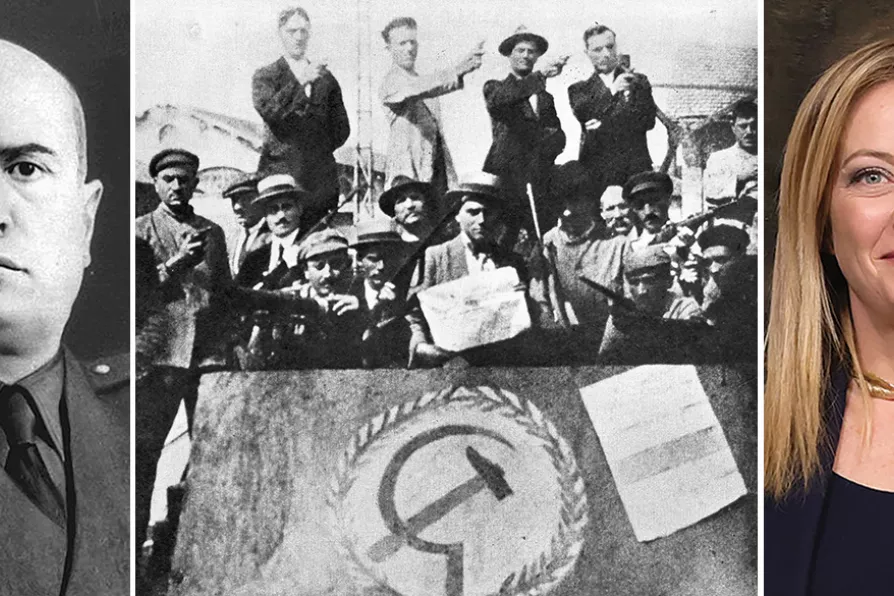RICHARD MURGATROYD enjoys a readable account of the life and meditations of one of the few Roman emperors with a good reputation

 THE MISSING LINK: Factories manned by the Red Guards in the 1920 'Biennia Rosso’ - 1919-20,’ Benito Mussollini (left) and Giorgia Meloni (right)
[(L to R) Vituzzu/Public domain - Storia de Fascismo di Enzo Biagi/Public domain - Cabinet Public Information Office/CC]
THE MISSING LINK: Factories manned by the Red Guards in the 1920 'Biennia Rosso’ - 1919-20,’ Benito Mussollini (left) and Giorgia Meloni (right)
[(L to R) Vituzzu/Public domain - Storia de Fascismo di Enzo Biagi/Public domain - Cabinet Public Information Office/CC]
MARK COUSINS’S useful and provocative essay documentary The March on Rome begins with an examination of the “clunky” but influential propaganda film A Noi (To Us) made by Umberto Paradisi in 1922 to glorify the Italian Fascist coup d’etat, and ends with a shocking newsreel of an Italian partisan crushing the executed dictator’s face to pulp with his boot.
Around these events swirl an enormous historical context which Cousins barely touches: the Biennio Rosso (“two red years”) of 1919-20 — when Italian workers led a massive strike wave and occupied factories and shipyards, but which, in the absence of revolutionary leadership, was stalled by reformist unions, leaving a vacuum for fascism to fill; the 23-year legacy of Fascist rule: the suppression of democratic rights, the campaign of terror to crush the organised labour movement, the murderous colonial wars in the Balkans and North Africa, the participation in the Holocaust as an ally of Hitler and the role of communist partisans in the overthrow of the regime.
Cousins made the film because he was approached by Italian producers and he “couldn’t say no. It played to a number of my interests: the ‘spectacle’ of fascism, and the fact that I could use cinema to talk about how the visual culture of fascism worked then and maybe now.”

On the 80th anniversary of liberation from Nazi-fascism, left forces in Italy mobilise against genocide, armament, and the Meloni government, reports ANA VRACAR












